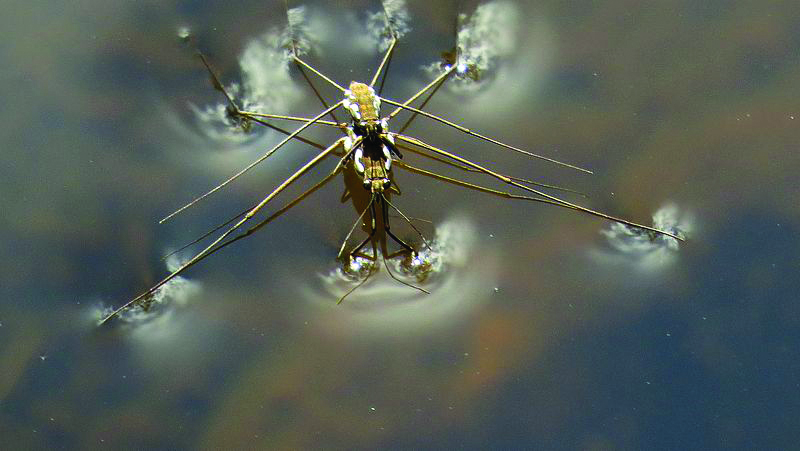April showers bring May flowers — and a host of other problems. After donning what is marketed as a water resistant rain jacket and securing an umbrella to battle the elements, there is nothing quite as disheartening as feeling rain soak into a dry layer of clothing, or knowing your thin backpack containing several textbooks and a computer is being slowly saturated. What if rain gear was scientifically incapable of getting wet, and was actually able to repel water? Researchers at Northwestern University are exploring this question as they work to develop a material that stays dry underwater.
The research team, led by Northwestern mechanical engineering professor Neelesh Patankar, began by looking for properties that would allow a surface to be immersed in water but emerge completely dry. Drawing inspiration from water bugs, whose fine leg hairs repel water by retaining gas pockets, the scientists began constructing a material that keeps water away using microscopic or nanoscopic ridges. The goal of their research was to take this feat of natural engineering and re-engineer it.
First, they had to find the critical roughness scale for gas trapping in a man-made material — the correct width and spacing for ridges on a textured surface such that they could trap gaseous air and water vapor in between. This design would force water to cling to the peaks, rather than touching the material itself.
Of course nothing in science is ever quite so simple, as the team found in attempting to engineer a perfect texture. There was little to no research available on how to create an effective surface roughness to deflect water. And for the material to stay dry, the gas containment in the valleys of the ridges would have to be sustained indefinitely. As pioneers in their field, Patankar and his fellow researchers went through a series of experiments to find the optimal distance between ridges.
Initially, their sample materials containing microscopic ridges lost their ability to deflect water after only a few days. By putting several samples through aging and degassing trials, they discovered that their ideal material needed even smaller ridges — on the nanoscopic scale. In fact, the material that successfully withstood the degassing trials had ridges roughly 10 times smaller than the width of a strand of spider silk.
This discovery that they needed to work in the nanoscale was a turning point for the researchers. According to Patankar, they noticed that once the valleys dipped below one micron in width, the pockets of water vapor created due to underwater evaporation and effervescence finally withstood the test of time. The trapped gas continued to successfully deflect water, even after the scientists made multiple attempts to dislodge it.
Beyond a future of water-repellant backpacks and umbrellas, the material created by Patankar’s team has the potential to change and economize major world industries. Because water cannot stick to this surface, it could revolutionize plumbing, especially in big cities. In pipes lined with the material, the drag that currently occurs due to the interaction between the interior of the pipe and the fluids within it would be eliminated, meaning water and liquid waste could be transported much faster. Additionally, the material could be used to make more weatherproof roof tiles and house sidings. This would greatly reduce the frequency with which homeowners have to undergo costly renovations for basic maintenance, and could have a lasting impact on both architecture and realty.
These tiny ridges offer tremendous possibilities. Their applications are limited only by engineers’ imaginations. Understanding water deflection could improve footwear, kitchen appliances, outdoors supplies, aquatic sports equipment, underwater research capabilities, and more. Researchers can use ever-dry surfaces to achieve big projects — provided that they first remember to think small.
Cover Image: Here, a water bug walks on the water’s surface. The water deflection capabilities due to the nanoscale surface roughness in this species’ legs served as inspiration for Patankar’s research. Image courtesy of Wikimedia Commons.

